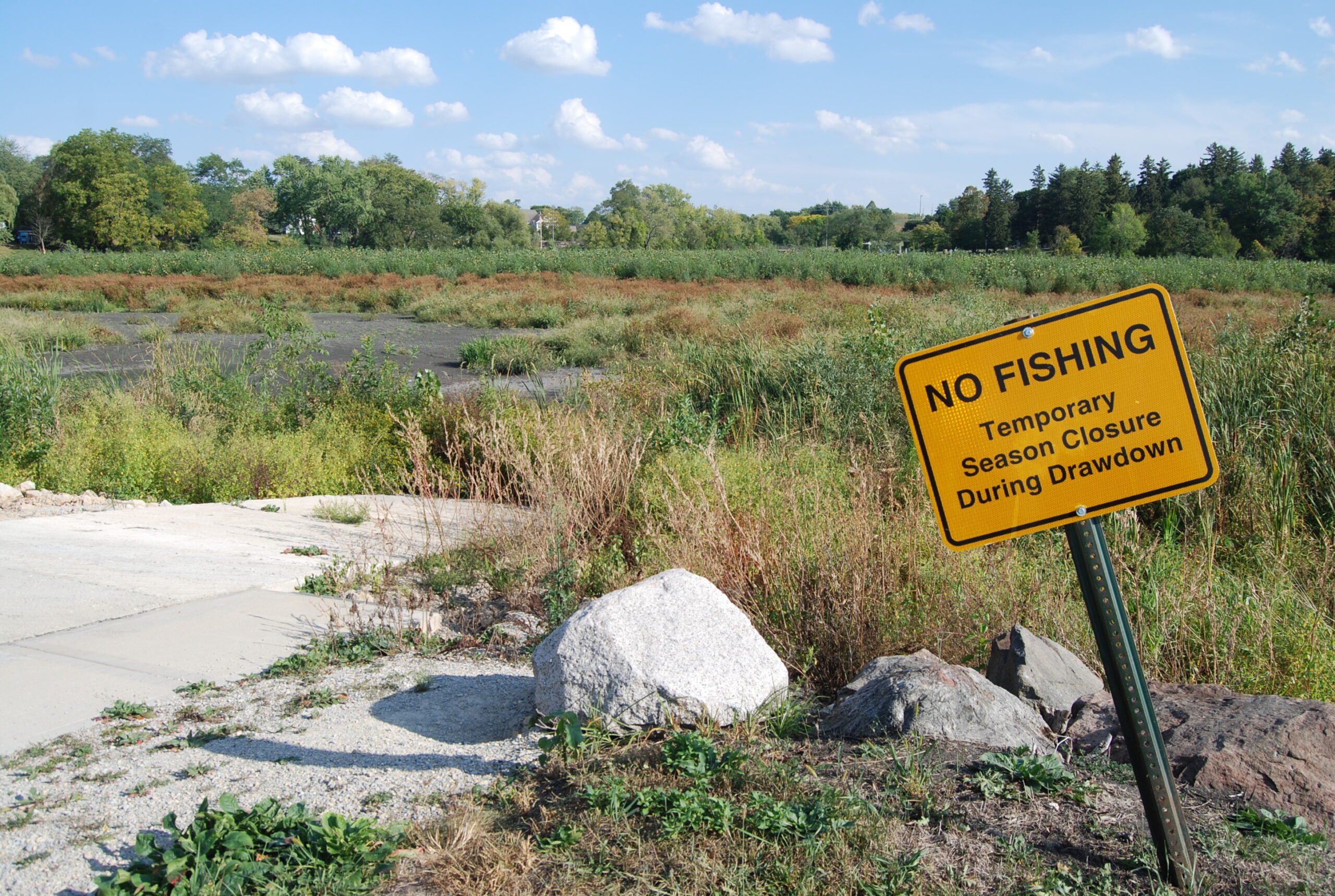By Kim McDarison
Whitewater City Manager Cameron Clapper delivered virtually Thursday an annual “State of the City” address which included an update of plans underway to restore Cravath and Trippe lakes.
The hour-long virtual forum was hosted by the Whitewater Area League of Women Voters and featured annual addresses about the state of the city and the Whitewater Unified School District.
Cravath and Trippe lakes are part of a connected water system which is impounded by a small dam located in Whitewater’s downtown. Both have been drawn down for nearly two years as part of the city’s plan, according to city officials, to revitalize the lakes to better serve the community for recreational use. The system stretches from the downtown area into adjacent neighborhoods on the southeast side of the city.
An unusual downtown landscape
Dominating the downtown area’s southernmost sector, Cravath Lakefront Park was, according to the city’s website, built in the 1990s to serve as an open space and encourage visitors to the downtown area. The park, overlooking Cravath Lake, is home to Cravath Lakefront Community Center and a bandstand, and is often used for community celebrations, concerts, and weddings.
Today, ornamental concrete, walkways and benches, which once accentuated the lake, grace what appears as a vast field of wetland vegetation, creating an unusual landscape where once stood a lake.
The growth has been developing in the lake beds since the water was drained in anticipation of restorative dredging. The lushness and rapid rate of vegetation growth, Clapper said during his address, was a tribute to the nutrient-rich soil the extended lakebed offers.
Even as the new landscape takes hold, both Clapper, during Thursday’s address, and Whitewater Parks and Recreation Director Eric Boettcher, during a presentation made about the project to the Whitewater City Council in August, have said that plans to restore the lakes remain underway and on schedule.
Filled with sediment
Aided by slides during Thursday’s presentation, Clapper described capturing the lakes for recreational use as “an ongoing challenge.”
He cited the lakes as both “beautiful and valuable water resources,” but, over time, he said, because the lakes are impounded, they were subject to the formation within their beds of increasing volumes of sediment.
That sediment, he said, as it filled the lakes, gave rise to opportunities for invasive species to grow in large proportions throughout the lakes, making them, he added, “undesirable for navigation or really for other water recreation and activities. So we are … draining them to rehab the lakes.”
Using a series of photographs taken of the two-lake system as it was drawn down, Clapper said that now, in the second year of drawdown, what he termed as “greenery” was covering most of the lake beds with a small stream of water still running through.
“That stream is actually removing sediment in an area that we will utilize as kind of a base point for dredging,” which, he said, was slated to take place during the beginning of next year.
Once the work is done, he said, “these lakes can be more useful to the public.”
Sharing photographs of some of the more remote regions of the lakes, Clapper said: “We’ll be dredging portions of that area. An interesting thing to note: on the back end of the lake in this image, the area that is covered in water is actually that way partly because of the creek that’s flowing in, but also because of some natural springs that exist in that area. It’s been nice to see those springs and to be able to recognize where they are in the lake. With the murky water before, nobody could go out on a boat and enjoy that. We’re hoping to make that a much more enjoyable feature once we rehabilitate the lakes, where we can actually go out on a boat and see through clear water those springs on the lakebed.”
To achieve the city’s goals, Clapper said, a first step in the process is to kill or at least weaken some of the new growth that has been established in the lakebed.
“We have to remove some of this vegetation. And to do that, the first step is to spray a herbicide and do what we can to kill and weaken the vegetation,” he said, describing new lake vegetation as easily the height of a human being.
“We can’t burn that the way it is without risking loss of control of the fire, so we’ll weaken it with herbicide, kill some of it … and then initiate what’s called a controlled burn. And those events will happen throughout the month of October and into even November, and possibly December of this year. And then the ground will be frozen, we hope by then, and we will move onto dredging beginning possibly in January,” he said.
According to Clapper, dredging would take place likely between January and March, and water would be returned to the lakes perhaps by early or late July of 2022.
“So they (the lakes) will be back to something we can all swim in or look in or navigate with a boat by the end of next year,” he said.
Low water levels desired, project progressing smoothly
In August, Boettcher shared similar slides as those used by Clapper, calling the photographs a snapshot of where the project stood and “a wrap-up of our last four years.”
Presenting information to the city council, including aerial photos of the lakes taken in 2019, Boettcher said they documented what he described as “a lot of vegetation on top of the water,” including “green slime.”
He drew comparisons between aerial photos taken of the lakes in both 2019 and August of this year, noting what he described as “a drastic difference,” between the two snapshots in time, which, he said, resulted from the drawdown. In August, he said, slides taken that month showed that water within the system had been drawn down, leaving no more than a stream of water flowing through the center of the lakes. The rest of the bed had grown up in vegetation.
Showing an aerial of the bed near Cravath Lakefront Park taken in August, Boettcher said the nearly empty bed was a desired result as the city prepares for lake dredging.
Boettcher shared similar slides of Trippe Lake, noting that in July of 2019, the lakebed was filled with water, while in August of 2021, the bed was drawn down, showing small traces of water moving through the vegetation.
Boettcher said pictures in August showed water levels were “brought down to where we would hope to,” adding, “This project is going along pretty smoothly.”
Boettcher said drawings and other pertinent information about the project had been submitted to the state Department of Natural Resources (DNR), which was a necessary step to gain the department’s approval for the city’s dredging permit.
Another slide presented by Boettcher showed the “planned dredging area,” which Boettcher said, is the area from which sediment will be removed from the lake beds. He also talked about what he called “staging areas,” noting that equipment used to dredge the lakes will operate from Cravath Lakefront Park and Trippe Lakefront Park, respectively.
“This is where we will remove sediment and mobilize to do the actual dredging project,” he said, adding that equipment will be moving in and out of the park areas.
Also identified were two deposit sites to which dredged material would be hauled, with one planned for an area east of and adjacent to the Innovation Center, located in the city’s industrial park.
“This is set up so we have a dewatering area and we have one spot here where there is about 5,000 cubic yards of sediment that we have to dispose of properly and cover with two feet of fill. The rest is all good sediment that we can remove and deposit in other areas,” he said.
A second spot identified by Boettcher to receive dredging spoils is property owned by Whitewater resident Geoff Hale. The property is near Cravath Lake, Boettcher said. He described the property as “a great addition to our project,” adding, “the nice part about having these two sites is that there’s more than enough land to deposit the 87,000 cubic yards we are looking at doing.”
Beottcher further noted that dredging contractors are sometimes interested in keeping the dredging spoils, in which case, he said, the sites will not be needed. However, he said, DNR approval of the dredging permit requires that the city has sites identified to receive the spoils.
Looking at project costs, Boettcher said, Phase 1, which was the project planning and water level drawdown phase, as calculated between Jan. 1, 2017 and August 17, has so far cost the city $102,893.
Included within resources used to offset costs associated with Phase 1 are some funds which were supplied through a $25,000 grant, he said.
“We currently have $1,328,000 in the budget to remove the 87,000 cubic yards (of dredged spoils)” he said.
At $1.3 million dollars, Boettcher identified Phase 2 dredging as “the most expensive cost element of the project.”
Looking at the remaining timeline for the project, he said, the lakes will remain drawn down in 2021. The DNR permit application process is expected to complete sometime between late September and early October of this year. The dredging project is anticipated to go out for bidding this fall. A controlled burn of the vegetation in the lake beds is scheduled for November, with dredging possibly beginning this winter. A second controlled burn of any new or emergent vegetation in the lake beds is anticipated to take place in April of 2022.
Dredging would be expected to continue into next year, potentially through January, February and March, Boettcher said.
Using that schedule, he added, he would anticipate refilling the lakes with water in June of 2022.
Responding to questions asked by council members is August, Boettcher said the Whitewater Community Foundation had expressed interest in helping to support the project through the funding of what he termed “enhancements,” offering as example boat launches.
“There is also grant funding available for that, but the community foundation is looking at helping support this project because the lakes are a lively part of our community. The more financial help we can get, the more projects we can get done along the lake,” he said.
Boettcher also addressed a question about the potential for eradicating carp populations in Cravath and Trippe lakes. While procedures to achieve that goal exist, they could cost as much as $10,000 and would not likely bring about the desired changes in the fish population for more than a year, he said, adding that the lakes are part of an “open water system,” meaning that carp could return to the lakes by swimming upstream or downstream using connecting water channels.
He described the solution as “not really worth our investment to remove them at this time.”
At council’s urging, he said, he would continue to explore solutions.
The full update as presented by Boettcher in August is here: https://vimeo.com/589042556?ref=em-share.
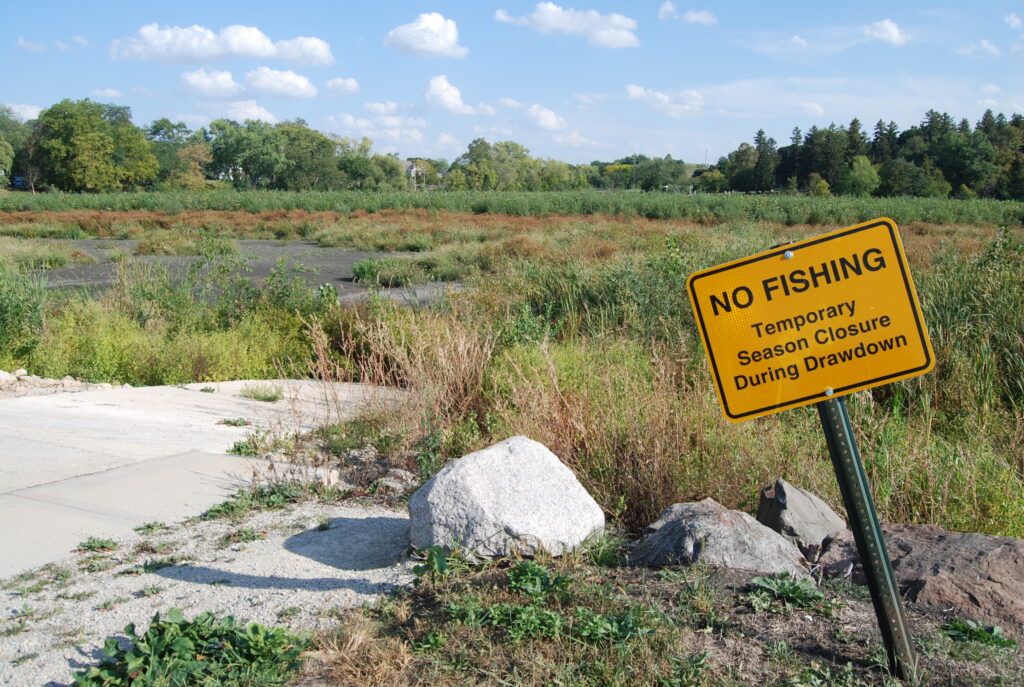
Signage alerts would-be fishermen that Cravath and Trippe lakes are closed. The concrete slab, at left, is a launch that once offered Cravath Lake access to boaters.
Kim McDarison photo.

An ornamental concrete shoreline denotes where Whitewater’s downtown Cravath Lakefront Park once met with the water of Cravath Lake. A sea of seven-foot-tall plants today engulfs the promenade.
Kim McDarison photo.
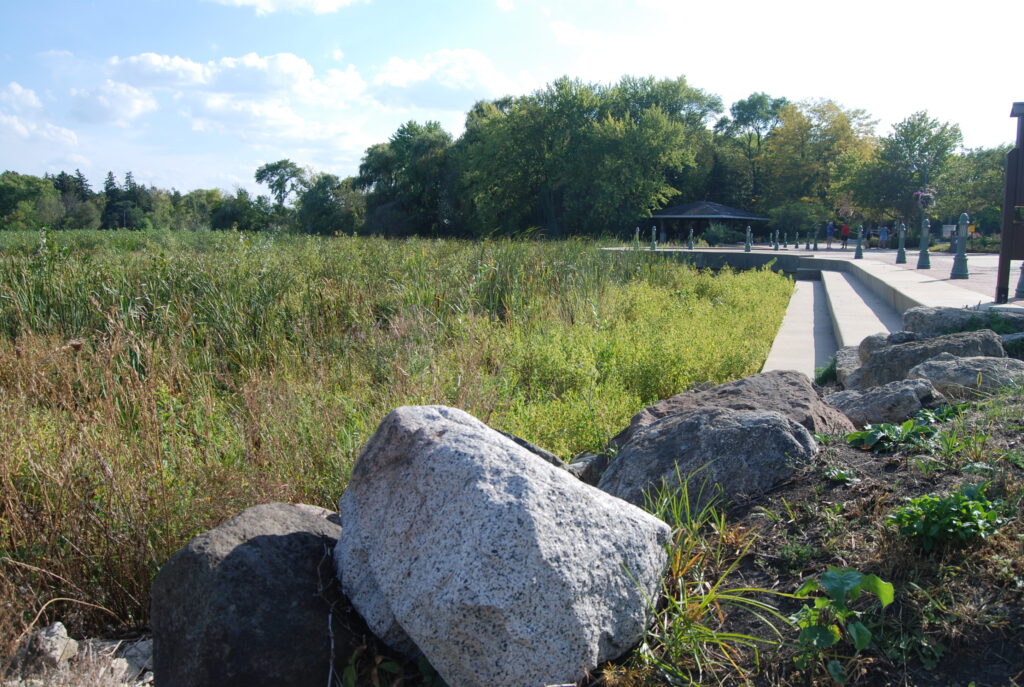
Vegetation covers the Cravath Lake bed. Kim McDarison photo.
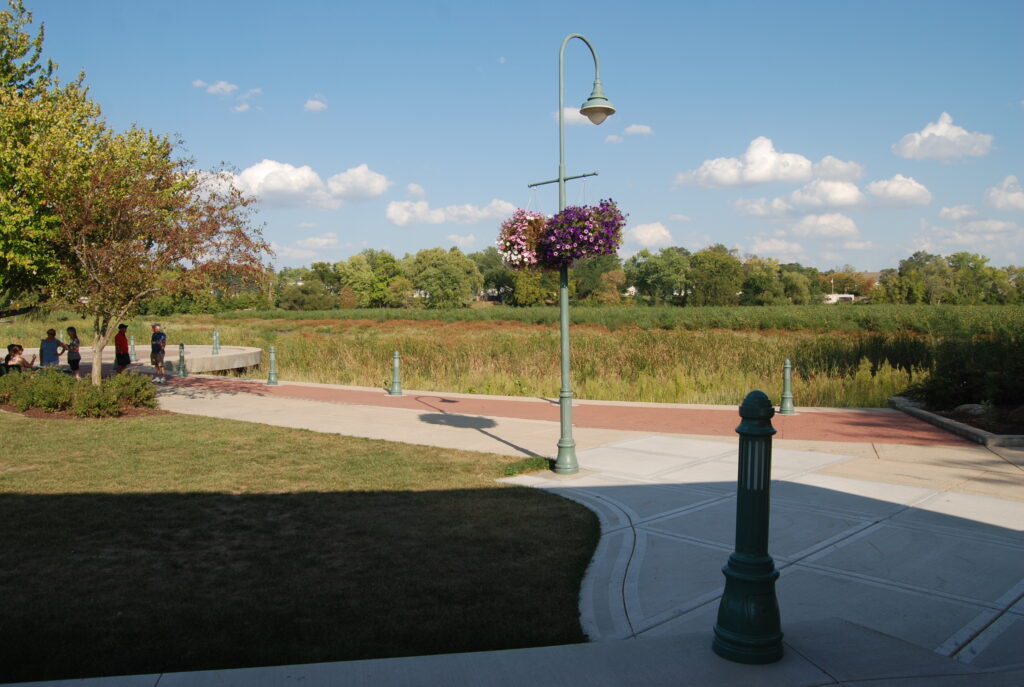
Visitors to Cravath Lakefront Park find a new landscape. Kim McDarison photo.
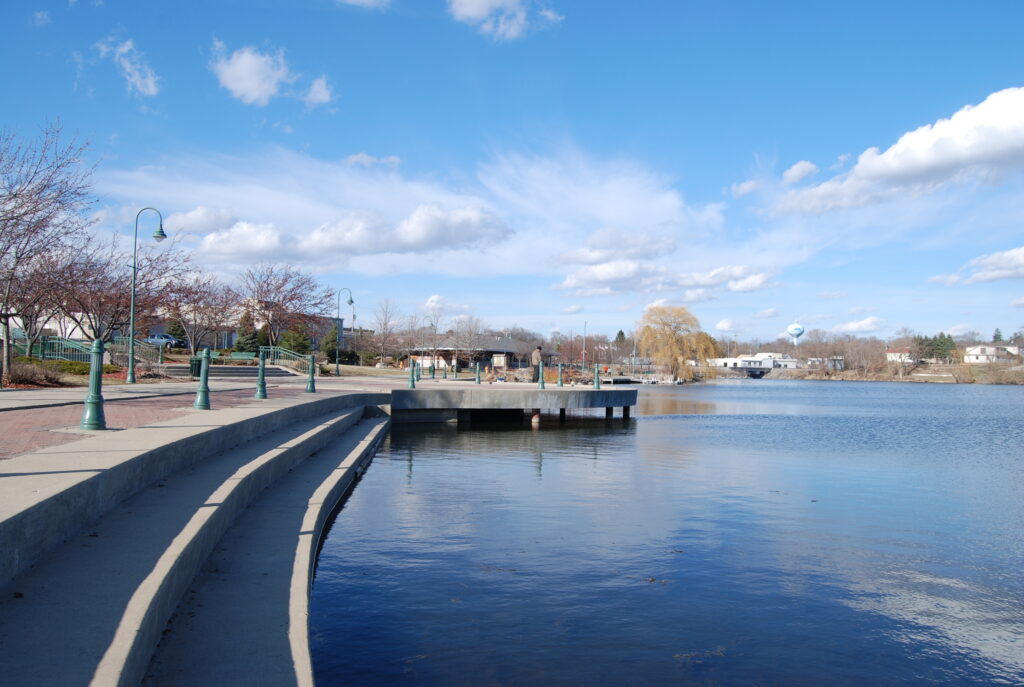
Cravath Lake where it meets the shore at Cravath Lakefront Park. The photo was taken on a crisp spring day in 2015. Kim McDarison photo.
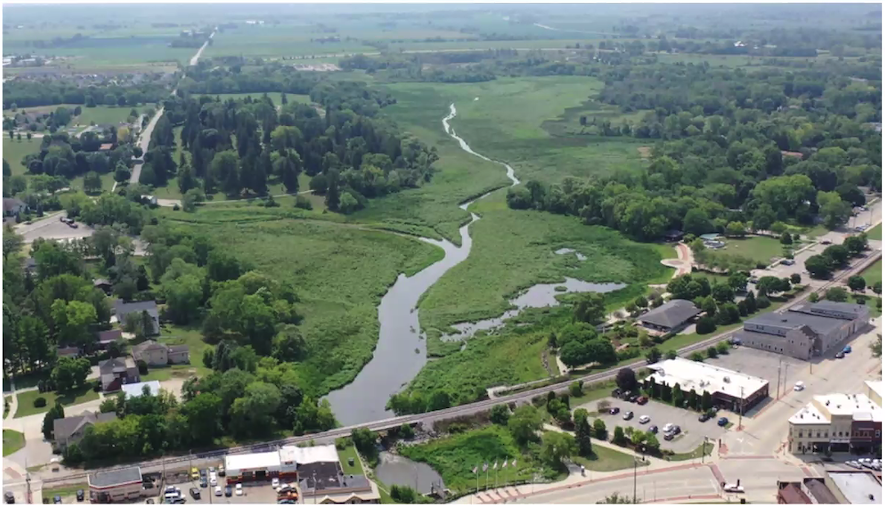
An aerial view of Cravath and Trippe lakes showing receding water and encroaching vegetation. The drawdown is part of a process designed to make the lakes more functional for recreation. The process is anticipated to complete, with water returned to the lakes, by the summer of 2022. The aerial view was among slides shared by Whitewater City Manager Cameron Clapper during his State of the City address delivered virtually Thursday.
This post has already been read 39578 times!
